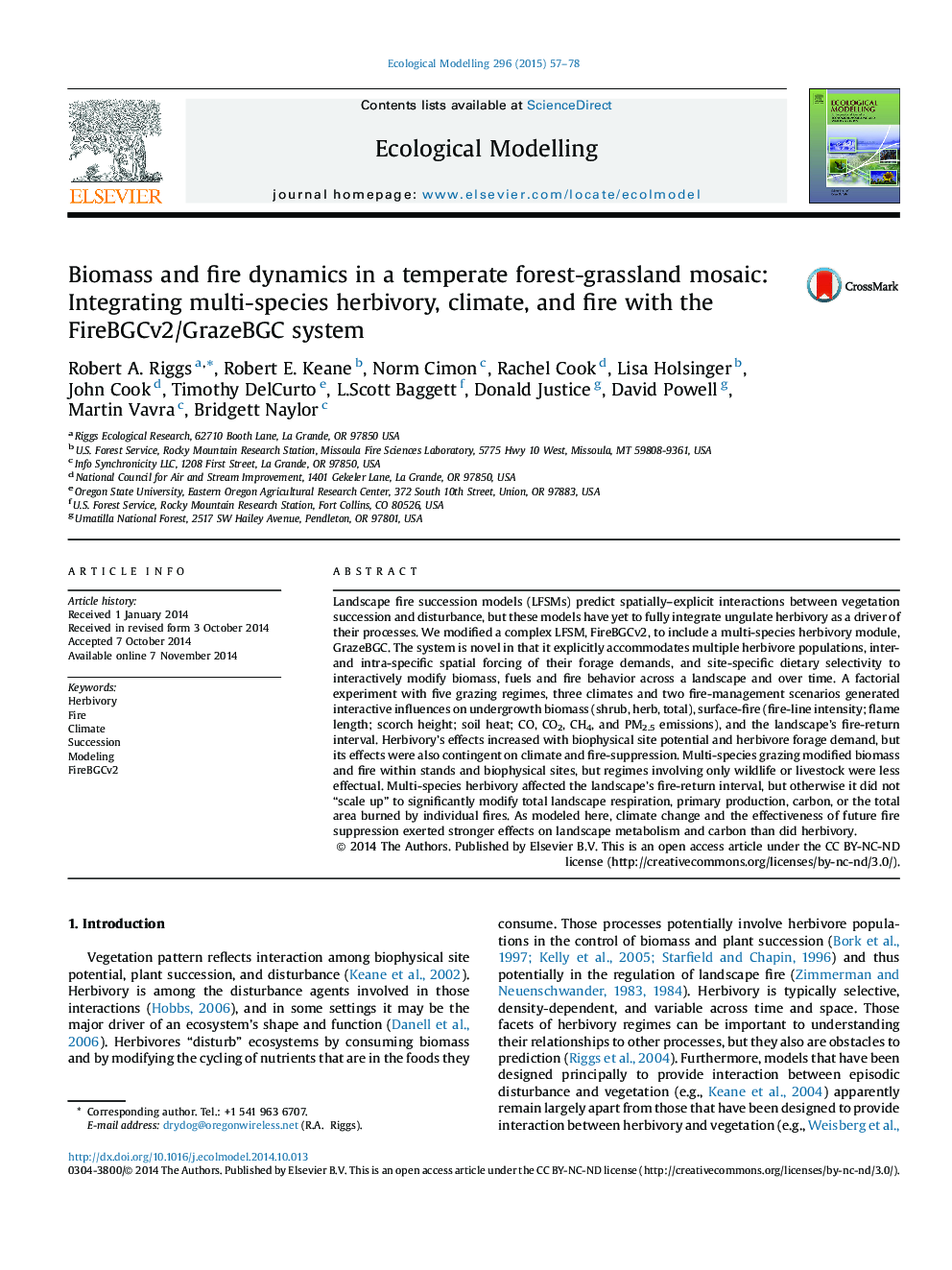| کد مقاله | کد نشریه | سال انتشار | مقاله انگلیسی | نسخه تمام متن |
|---|---|---|---|---|
| 6296801 | 1617450 | 2015 | 22 صفحه PDF | دانلود رایگان |
عنوان انگلیسی مقاله ISI
Biomass and fire dynamics in a temperate forest-grassland mosaic: Integrating multi-species herbivory, climate, and fire with the FireBGCv2/GrazeBGC system
دانلود مقاله + سفارش ترجمه
دانلود مقاله ISI انگلیسی
رایگان برای ایرانیان
موضوعات مرتبط
علوم زیستی و بیوفناوری
علوم کشاورزی و بیولوژیک
بوم شناسی، تکامل، رفتار و سامانه شناسی
پیش نمایش صفحه اول مقاله

چکیده انگلیسی
Landscape fire succession models (LFSMs) predict spatially-explicit interactions between vegetation succession and disturbance, but these models have yet to fully integrate ungulate herbivory as a driver of their processes. We modified a complex LFSM, FireBGCv2, to include a multi-species herbivory module, GrazeBGC. The system is novel in that it explicitly accommodates multiple herbivore populations, inter- and intra-specific spatial forcing of their forage demands, and site-specific dietary selectivity to interactively modify biomass, fuels and fire behavior across a landscape and over time. A factorial experiment with five grazing regimes, three climates and two fire-management scenarios generated interactive influences on undergrowth biomass (shrub, herb, total), surface-fire (fire-line intensity; flame length; scorch height; soil heat; CO, CO2, CH4, and PM2.5 emissions), and the landscape's fire-return interval. Herbivory's effects increased with biophysical site potential and herbivore forage demand, but its effects were also contingent on climate and fire-suppression. Multi-species grazing modified biomass and fire within stands and biophysical sites, but regimes involving only wildlife or livestock were less effectual. Multi-species herbivory affected the landscape's fire-return interval, but otherwise it did not “scale up” to significantly modify total landscape respiration, primary production, carbon, or the total area burned by individual fires. As modeled here, climate change and the effectiveness of future fire suppression exerted stronger effects on landscape metabolism and carbon than did herbivory.
ناشر
Database: Elsevier - ScienceDirect (ساینس دایرکت)
Journal: Ecological Modelling - Volume 296, 24 January 2015, Pages 57-78
Journal: Ecological Modelling - Volume 296, 24 January 2015, Pages 57-78
نویسندگان
Robert A. Riggs, Robert E. Keane, Norm Cimon, Rachel Cook, Lisa Holsinger, John Cook, Timothy DelCurto, L.Scott Baggett, Donald Justice, David Powell, Martin Vavra, Bridgett Naylor,